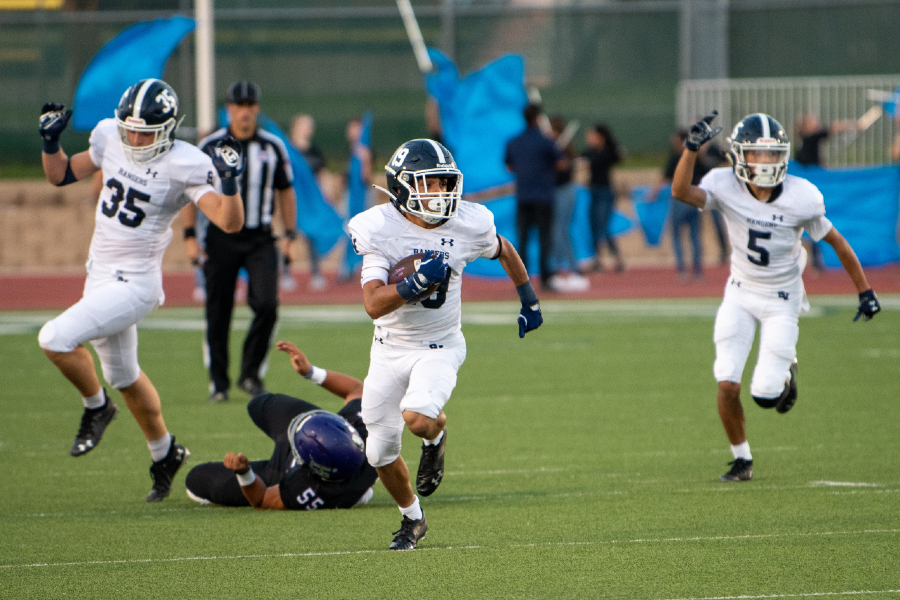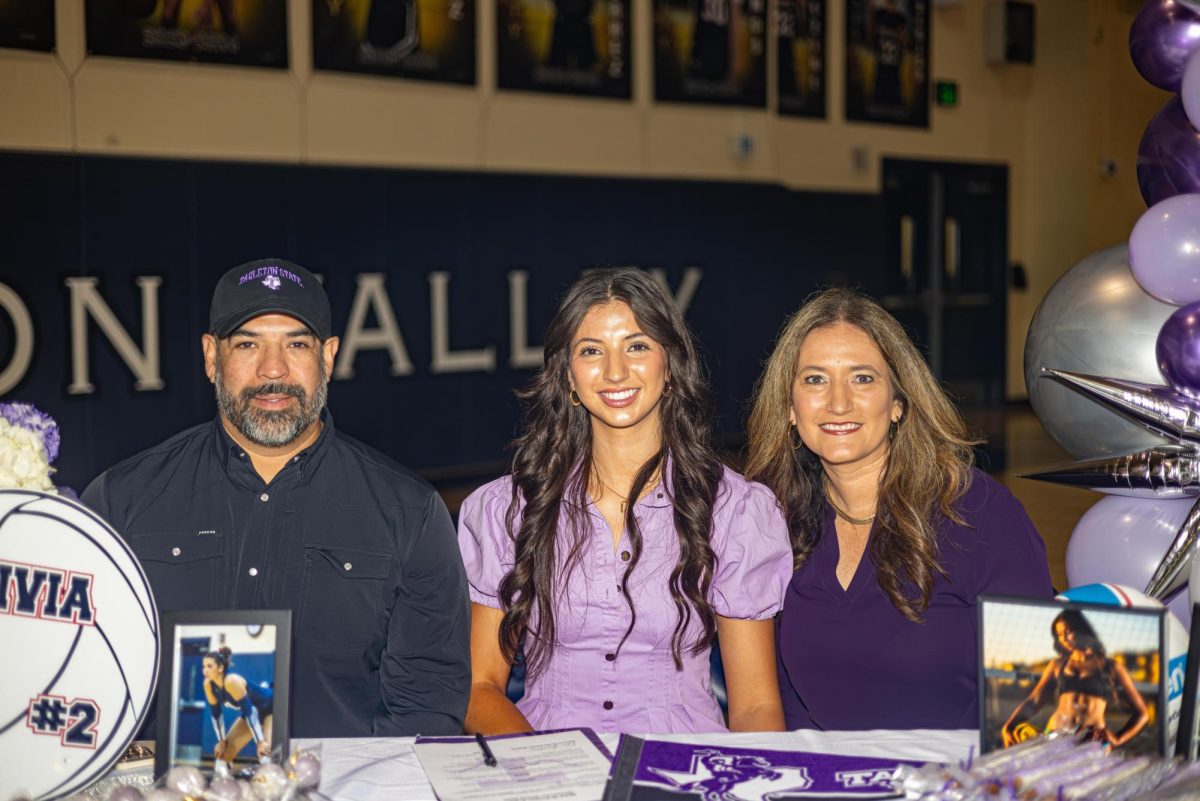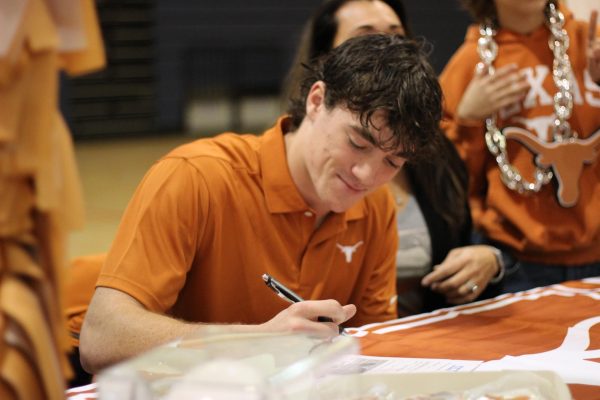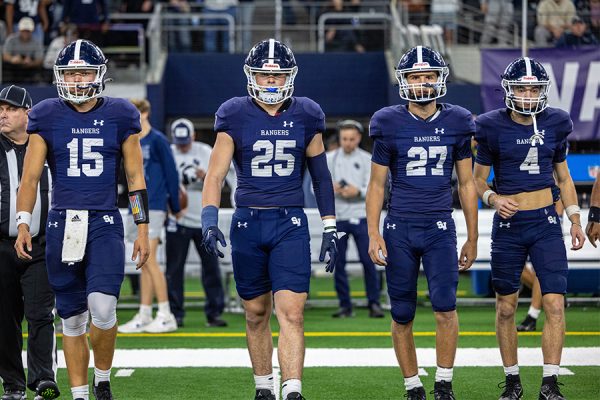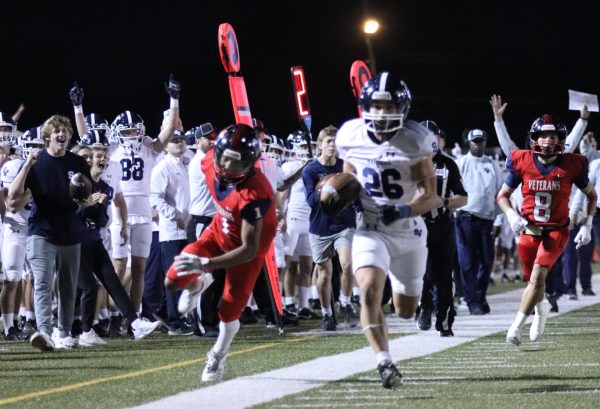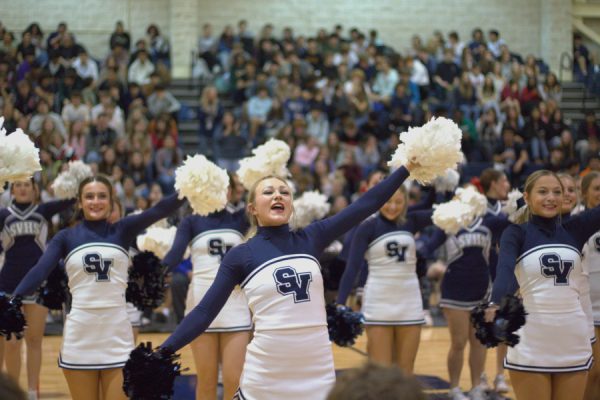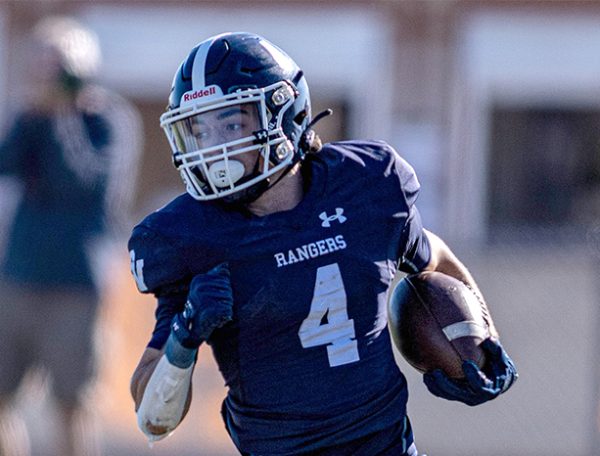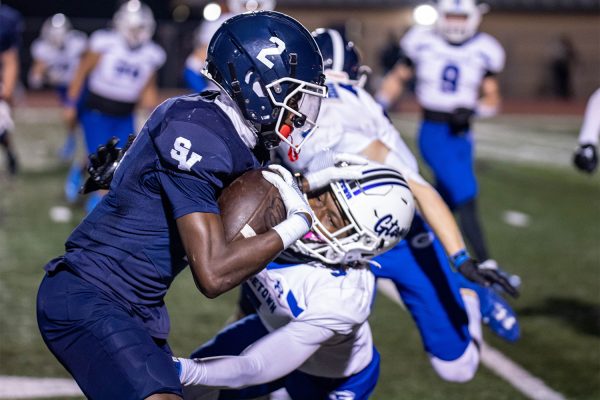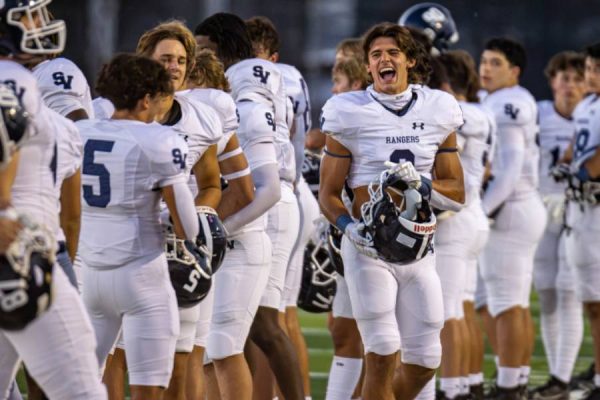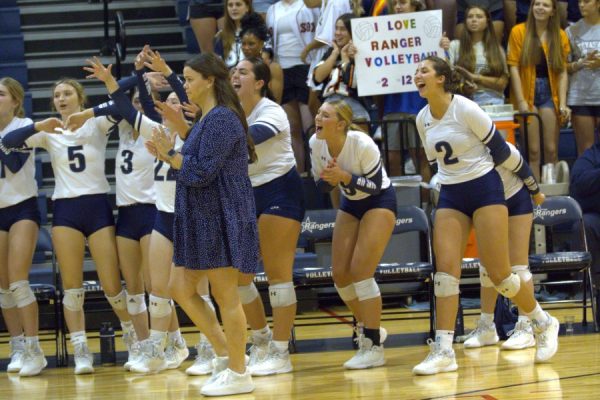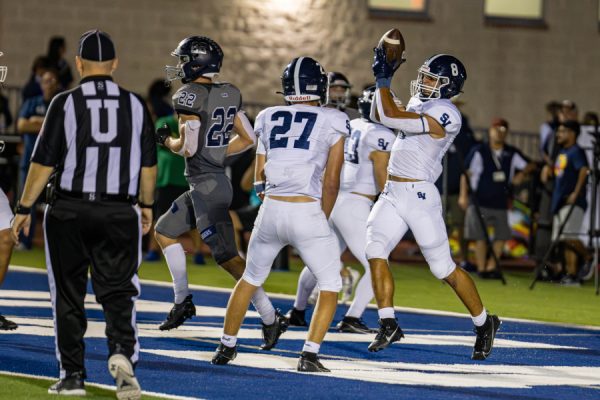Pigment of the imagination
Urban legend regarding color scheme debunked
Brayden Bafidis (center) charges past the Warren defense for a punt return touchdown against Warren on Aug. 27. That game saw the Rangers’ first uniform change in two decades.
September 23, 2021
Every year, the same debates over Smithson Valley’s color scheme are renewed. Namely, whether the removal of the color red was a mistake. Unfortunately, many of these arguments are based on information that is factually incorrect.
Smithson Valley opened in 1976 as a “bicentennial school,” sporting a patriotic color scheme of red, white and blue. But somewhere along the line, red was largely phased out, and the school moved to a simpler navy-and-white pattern.
This change has often been attributed to head football coach and athletic director Larry Hill, whose predilection for an old-school style (such as placing numbers, rather than logos, on helmets) seems to paint him as the likely mastermind behind the scheme. But he says it wasn’t him.
“I never made a decision (to stop using red),” Hill said.
According to Hill, he did change the color scheme, but he never touched the red – only unified the blue.
“When I got here in 1993, the only discussion I had about school colors was, we had every shade of blue in every athletic team that you could ever imagine,” Hill said. “We had navy blue, we had some (uniforms) that were royal blue. We had some that were wearing Columbia blue.”
“And I asked the principal at the time – who actually was the first principal, he had actually come back for a second, go ’round at it – ‘What are we?’ He says, ‘We’re the American flag; we’re navy blue. Just red, white and blue … but blue is the dominant color.’”
So Hill issued a directive to stipulate which exact shade of blue could be used. But he simply followed orders when it came to the scarlet third.
“I guess, with Canyon being the sister school … red’s their thing,” Hill said. “So we kind of just used that. (The principal told me that) ‘most of the sports don’t use (red), but the ones that use it, it’s kind of a trim color.’”
In his 28 years at the school, Hill has made a few changes: in 2001, football adopted their current style of numerical helmets. But when Hill arrived at the school, the uniforms were already navy and white.
In other words, Hill never phased out red; if anything, it was everyone else who changed. But that’s not to say he’s upset with the development.
“Having two or three different colors, that’s stupid,” Hill said, laughing. “I mean, what is our color?”
And yet even if he had wanted to implement a simpler color scheme, he doesn’t have that sort of power.
“It wouldn’t be my decision to make,” Hill said. “That’d be the school district, or the principal, or – but, do any of them wear red? Well, no. I mean, you look around, I think we’ve kind of developed, whether knowingly or unknowingly … (and) not really by a grand design, (but) we’ve … developed kind of a mantra of navy and white. Pretty old-school. But that’s not some athletic department policy by any means.
“We’ve had sports on and off through the years that have had a little red trim, and that’s been fine. But no, there’s no Larry Hill or athletic department decision on that.”
Instead of pushing for innovation on the branding side, the football program has focused on what happens on the field. After signing with Nike in the mid-2000s (the school is now affiliated with Under Armour), the company offered to fly in a few designers from Nike headquarters to draw up some new uniform designs. Hill declined that offer.
“They said, ‘we’re going to send two guys … to come down and go over a bunch of mocks with you for uniforms, the new uniforms we’re giving you,” Hill said. “And I said, well, you could send them down here if you want to, but I don’t know how much grand design (we need). It’s (either) a navy jersey with a white number on it, or you go white (jersey) and a Navy number on it – there’s not a whole lot of designing to do.
“And so, they laughed and … said, ‘so you’re not one of–,’ and I said, ‘no, we’re not one of those.’”
Hill’s deep-rooted design philosophy centers on a key principle: uniforms, logos and the works should not be used to be flashy. Their primary purpose is to serve as an instantly-recognizable identity.
It’s the reason why the football team wears numbers on their helmets and sticks with a traditional color palette. Why their logo is a block “SV” rather than a complex mascot. To quote Frank Abagnale Jr., the Yankees win games because “nobody can keep their eyes off the pinstripes.”
“A lot of people feel like, if you’ve got a bunch of different helmet wraps, or you got five, six, eight different (uniforms) – that that’s a cool deal,” Hill said. “And, sure, if that’s what you wanna do, you can, but we’ve always wanted to have an identity. The Yankees wear pinstripes. Since 1918. And that’s what the Yankees do. The Yankees don’t worry about being like everybody else, (because), ‘we’re wearing pinstripes.’ LSU wears white at home … they’re purple and gold, and they wear white at home. Alabama has one uniform, (too).
“And that’s kinda what we’ve decided years ago, that’s who we’re going to be. And we’re not gonna try to be like everybody else. They can be like us if they want to. Or not, you know, but we just kind of established an identity. I want them talking about how we carry ourselves and how we play, not, ‘man, they had another uniform last Friday night.’”
This year, for the first time in two decades, the football team fiddled with their road uniforms. The change was simple – exchanging Navy-colored pants for an all-white look – but excited several players, many of whom posted pictures in their new kits after a season-opening victory at Warren.
View this post on Instagram
“We try to change it, try to tweak the uniform about every 20, 25 years if we can,” Hill said. “We’re solid blue at home, and solid white on the road is a good look. We can mix and match, but that’s not really our style. We’re pretty basic. And so I would imagine that’s how we’ll look for a while.”
After three straight home wins, the Rangers are set to travel to New Braunfels (4-0, 1-0) on Thursday, to finally show off their all-whites in district play. The Unicorns, another blue-and-white team, are coming off an upset win at Judson, and their offense is averaging 375.8 yards per game. Rangers Network will livestream the matchup, which is scheduled to kick off at 7:00 p.m.

